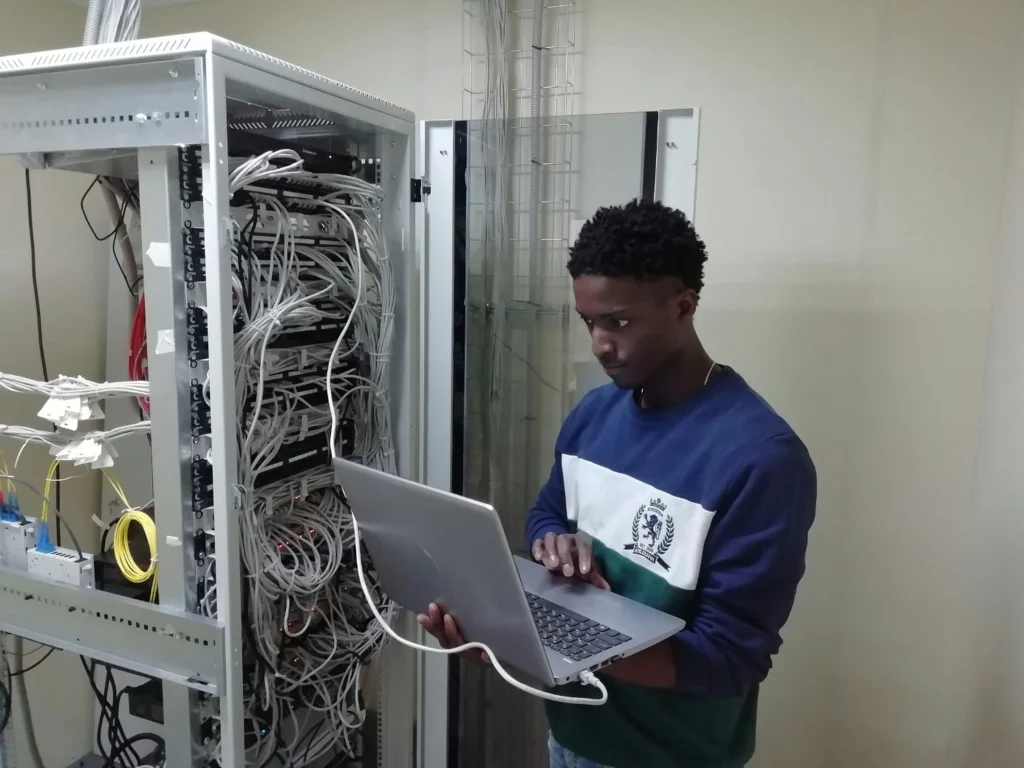Invisible Machines: How Virtual Apps Travel Across the World in Seconds
The Magic of Apps That Aren’t Really “There”
Picture tapping on a game or a video app. The screen changes almost instantly. It’s smooth, fast, and doesn’t seem to pause for even a second. But here’s the weird part: most of the work isn’t even happening inside the phone or tablet. It’s happening in machines far away, called servers. But not even normal servers — many apps run on virtual servers instead. These are invisible machines that help apps travel across the world super quickly.
This might sound complicated, but it’s actually pretty cool once it makes sense.
What’s a Server, Anyway?
Start simple. Think of a server as a powerful computer. It stores files, runs apps, and sends things out whenever someone asks for them. If a person wants to watch a video, the server sends the video. If someone wants to open an app, the server helps make it work.
Before, apps or websites usually lived on single, big machines sitting in rooms called data centers. Those machines were physical boxes, humming away with fans and blinking lights.
But putting every app on one machine is risky. What happens if it breaks? Or if too many people try to use it at once? Things can slow down or crash.
That’s why people started using virtual servers instead.
The Idea of Virtual Servers

Here’s where the “invisible” part comes in. A virtual server isn’t a real, separate computer you can touch. It’s software pretending to be a computer. Imagine one giant computer pretending to be ten smaller computers inside it. Each pretend computer is a virtual server.
Virtual servers can be moved around, copied, or given more power whenever needed. It’s like having toy blocks that can be snapped apart or built into bigger shapes depending on what someone wants to build. Except these blocks help run apps instead of toys.
Because virtual servers are just software, they can run on any physical machine that has enough power. This makes it super easy for apps to “travel” without actually moving boxes or wires.
This is also how big services help people “go global.” For example, people who want their apps to work in lots of countries might choose to try Go Global so their apps stay fast for everyone, no matter where they are.
How Apps Zoom Across the Planet
Let’s say someone opens a game while in France. The app might be stored on servers in Paris. But if that person flies to Japan and opens the same game, the app might run on servers in Tokyo instead. The app looks the same, but it’s coming from a completely different place.
That’s because apps running on virtual servers can switch where they live without anyone noticing. It happens super fast. This keeps things running smoothly and helps avoid delays, which people sometimes call “lag.”
Companies set up data centers in different parts of the world. These data centers hold big racks of physical servers. Inside those servers live many virtual servers. When a person opens an app, it connects to the closest place available. This means less travel for the data and much faster speeds.
Why Virtual Servers Make Life Easier
Virtual servers solve lots of problems at once. Here’s how:
- Speed: Apps get delivered from the closest server, so things load faster.
- Safety: If one machine breaks, apps can jump to another virtual server somewhere else.
- Cost: Running many apps on one machine is cheaper than buying lots of physical servers.
- Flexibility: Apps can be moved, copied, or given more power instantly.
Imagine a pizza shop that can magically pop up new kitchens anywhere in the world when there’s a big crowd. No long waits, no huge costs, and customers stay happy. That’s sort of what virtual servers do for apps.
Keeping Apps Safe from Problems
Virtual servers help keep apps safe if something goes wrong. Suppose one physical server has a problem and shuts off. The virtual servers running on it don’t just disappear forever. Instead, they can quickly move to another working server in the same data center or even in another country.
This protects apps from big crashes. People might not even notice anything happened. It’s one reason apps hardly ever “go offline” for long anymore.
Virtual servers also help apps handle lots of users. When more people log on at once, extra virtual servers can be created to help share the work. When things calm down again, some virtual servers shut off so money isn’t wasted keeping them running for no reason.
Apps That Don’t Live in One Place
One of the coolest things about virtual apps is how they don’t belong to just one spot. A social media app might be running on virtual servers in New York, London, and Singapore all at the same time. If someone in London opens it, the app connects to the London servers. But a person in Sydney would connect to the servers closest to them instead.
This makes apps feel fast and snappy everywhere. Nobody wants to wait for pictures to load just because they’re halfway around the world.
Why Apps Need to “Travel”
Apps need to travel for lots of reasons. Sometimes people travel and still want their apps to work. Other times, companies want to reach new users in other countries. If apps stayed locked to one physical server, it’d be too slow for people far away. Or worse, the app might not work at all.
So, companies let apps “travel” by putting them on virtual servers around the world. Virtual servers can pop up or disappear whenever they’re needed. Apps can shift between them without any big mess.
The Future of Virtual Apps
It might seem futuristic, but virtual servers are already everywhere. Video calls, music streaming, online games — all of them rely on virtual servers to stay fast and reliable. As people use more apps and share more videos or pictures, companies will keep building better ways for virtual apps to move around.
Even new technology like virtual reality and smart devices depends on virtual servers. These invisible machines help make sure everything runs smoothly, no matter how much data needs to travel.
So, next time someone opens a favorite app and it pops up quickly, remember there’s a whole team of invisible machines working together behind the scenes. And they’re helping those apps zoom across the world in seconds.
What to Remember
Invisible machines called virtual servers help apps travel around the world in a blink. They’re not real machines you can touch but pretend computers inside bigger computers. Because of them, apps load faster, stay online even if problems happen, and work in many places at once.
Without virtual servers, the internet would feel slow, crowded, and messy. Thanks to this clever trick, apps can live anywhere — and reach everywhere.
Isn’t it amazing how much is happening behind the scenes every time a screen lights up?







